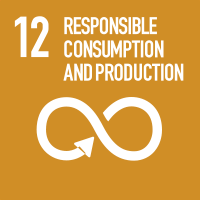Studying at the University of Verona
Here you can find information on the organisational aspects of the Programme, lecture timetables, learning activities and useful contact details for your time at the University, from enrolment to graduation.
Type D and Type F activities
Type D learning activities are the student's choice, type F activities are additional knowledge useful for job placement (internships, transversal skills, project works, etc.). According to the Teaching Regulations of the Course, some activities can be chosen and entered independently in the booklet, others must be approved by a special committee to verify their consistency with the study plan. Type D or F learning activities can be covered by the following activities.
1. Modules taught at the University of Verona
Include the modules listed below and/or in the Course Catalogue (which can also be filtered by language of delivery via Advanced Search).
Booklet entry mode: if the teaching is included among those listed below, the student can enter it independently during the period in which the curriculum is open; otherwise, the student must make a request to the Secretariat, sending the form to carriere.scienze@ateneo.univr.it during the period indicated.
2. CLA certificate or language equivalency
In addition to those required by the curriculum/study plan, the following are recognized for those matriculated from A.Y. 2021/2022:
- English language: 3 CFUs are recognized for each level of proficiency above that required by the course of study (if not already recognized in the previous course of study).
- Other languages and Italian for foreigners: 3 CFUs are recognized for each proficiency level starting from A2 (if not already recognized in the previous study cycle).
These CFUs will be recognized, up to a maximum of 6 CFUs in total, of type F if the study plan allows it, or of type D. Additional elective credits for language knowledge may be recognized only if consistent with the student's educational project and if adequately justified.
Those enrolled until A.Y. 2020/2021 should consult the information found here.
Method of inclusion in the booklet: request the certificate or equivalency from CLA and send it to the Student Secretariat - Careers for the inclusion of the exam in the career, by email: carriere.scienze@ateneo.univr.it
Warning: to students, who have achieved the B2 level of English in their three-year careers (bachelor), we emphasize the need to replace the full B2 level of English, provided by the study plan, with the C1 level of "computerized" English (prova informatizzata) or to acquire other language proficiency in a community language at least at the full B1 level.
3. Transversal skills
Discover the training paths promoted by the University's TALC - Teaching and learning center intended for students regularly enrolled in the academic year of course delivery
Mode of inclusion in the booklet: the teaching is not expected to be included in the curriculum. Only upon obtaining the Open Badge will the booklet CFUs be automatically validated. The registration of CFUs in career is not instantaneous, but there will be some technical time to wait.
4. CONTAMINATION LAB
The Contamination Lab Verona (CLab Verona) is an experiential course with modules on innovation and enterprise culture that offers the opportunity to work in teams with students from all areas to solve challenges set by companies and organisations.
Upon completion of a CLab, students will be entitled to receive 6 CFU (D- or F-type credits).
Find out more: https://www.univr.it/clabverona
PLEASE NOTE: In order to be admitted to any teaching activities, including those of your choice, you must be enrolled in the academic year in which the activities in question are offered. Students who are about to graduate in the December and April sessions are therefore advised NOT to undertake extracurricular activities in the new academic year in which they are not enrolled, as these graduation sessions are valid for students enrolled in the previous academic year. Therefore, students who undertake an activity in an academic year in which they are not enrolled will not be granted CFU credits.
5. Internship/internship period
In addition to the CFUs stipulated in the curriculum/study plan (check carefully what is indicated on the Teaching Regulations): here information on how to activate the internship.
Check in the regulations which activities can be Type D and which can be Type F.
Modules and other activities that can be entered independently in the booklet
| years | Modules | TAF | Teacher |
|---|---|---|---|
| 1° 2° | Introduction to quantum mechanics for quantum computing | D |
Claudia Daffara
(Coordinator)
|
| 1° 2° | Introduction to Robotics for students of scientific courses. | D |
Andrea Calanca
(Coordinator)
|
| 1° 2° | Mathematics mini courses |
Giacomo Albi
(Coordinator)
|
|
| 1° 2° | Web and mobile app design using react and react native | D |
Graziano Pravadelli
(Coordinator)
|
| 1° 2° | Firmware development with bluetooth low energy (BLE) protocol and freertos operating system | D |
Franco Fummi
(Coordinator)
|
| years | Modules | TAF | Teacher |
|---|---|---|---|
| 1° 2° | Introduction to Robotics for students of scientific courses. | D |
Andrea Calanca
(Coordinator)
|
| 1° 2° | Mathematics mini courses |
Giacomo Albi
(Coordinator)
|
|
| 1° 2° | Programming Challanges | D |
Romeo Rizzi
(Coordinator)
|
| 1° 2° | Protection of intangible assets (SW and invention)between industrial law and copyright | D |
Mila Dalla Preda
(Coordinator)
|
| years | Modules | TAF | Teacher |
|---|---|---|---|
| 1° 2° | Cooperative Game Theory in the (Deep) RL Era | D |
Alessandro Farinelli
(Coordinator)
|
Statistical models for Data Science (2023/2024)
Teaching code
4S009079
Academic staff
Coordinator
Credits
6
Also offered in courses:
- Statistical Models of the course Master's degree in Artificial intelligence
Language
English
Scientific Disciplinary Sector (SSD)
MAT/06 - PROBABILITY AND STATISTICS
Period
Semester 1 dal Oct 2, 2023 al Jan 26, 2024.
Courses Single
Authorized
Learning objectives
The course will be devoted to the mathematical background necessary to describe, analyze and derive value from datasets, possibly Big Data and unstructured, and to master the main probabilistic models used in the data science field. Starting from basic models, for example regressions, PCA-based predictors, Bayesian statistics, filters, etc., particular emphasis will be placed on mathematically rigorous quantitative approaches aimed at optimizing the data collection, cleaning and organization phases (e.g. series historical data, unstructured data generated in social media, semantic elements, etc.). The mathematical tools necessary to deal with the description of the time series, their analysis and forecasts will also be introduced. The contents of the entire course will be structured in interaction with the study of real problems relating to industrial, economic, social, etc., heterogeneous sectors, using software oriented to probabilistic modeling, for example, Knime, ElasticSearch, Kibana, R AnalyticFlow, Orange , etc.
Prerequisites and basic notions
Regarding both component modules of the entire course: basic notions of Probability Theory, knowledge of the main models of notable discrete and continuous random variables (eg: binomial, Poisson, Gaussian) and their main statistical properties; convergence theorems (eg: law of large numbers, central limit theorem), basic notions of discrete and continuous time stochastic processes (eg: Markov chains, birth and death processes), rudiments of statistical analysis and data (eg : frequency, average, mode, square deviation). Basics of programming in Python, relating in particular to general syntax, data structures, import / export, main graphics for data visualization. Rudiments of the main libraries such as Numpy, Pandas and Matplotlib.
Program
The course program is divided into the following macro-topics
Part 1 [module 1]
1. Time domain analysis
2. Frequency domain analysis
3. Tools for data analysis and cleaning (eg identification of outliers)
4. Methods of maximum verseimilitude, likelihood metrics, fitting density Probability
5. Principal Component Analysis (PCA) [PCA-based regressors / predictors]
6. AR, MA, ARMA, ARIMA, Box-Jenkins, ARCH, GARCH models and their generalizations
7. TIme series decomposition ACF / PACF and connected visualizations
8. Hypothesis tests Gaussian and jump processes / compound processes
9. Decomposition of white noise type processes
10. Bayesian statistics and applications
11. Forecast evaluations via consideration of inferential statistical models, based, eg, on autocovariance and partial autocorrelation, seasonality (SARIMA), variance analysis (ANOVA, MANOVA) , etc.
12. Smoothing techniques, spectral decomposition, polynomial fitting, etc.
Part 2 [module 2]
1. Recalls to programming in Python
2. Manage and view time series
3. Descriptive statistics
4. Analysis in the frequency domain
5. Linear regression for time series
6. Analyze and decompose the principal components of the time series (trend, cycle, seasonality)
7. Forecasting methods: Exponential Smoothing (simple, double, triple)
8. Forecasting methods: AR, MA, ARMA, ARIMA, SARIMA
9. Forecasting methods: ARCH, GARCH and generalizations
10. How to evaluate the different forecasting models
All the above points will be deepened through practical exercises that will require their implementation by appropriate Python codes.
Moreover, the main forecasting methods will be further investigated thanks to the treatment and resolution of real case studies of various types.
Bibliography
Didactic methods
The course will be divided into lectures, with slides as well as notes sharing, and computer simulations / exercises.
Learning assessment procedures
The final exam consists of two parts: one theoretical, the next practical / implementative. Consequently, the first part of the exam is functional to the verification of the learning of the theoretical concepts characterizing the statistical methods and the connected models and algorithms, at the basis of the IT-computational implementations used to donduct a project that the student will agree with the course teachers.
Latter "case study", together with the discussion of the coding parts created to complete it, will be the subject of the second and final part of the exam.
Evaluation criteria
The evaluation of the exam will be carried out by combining the results obtained from the two modules of the course, therefore giving equal importance to the correctness and effectiveness of the solutions adopted in the phase of solving concrete problems due to computer implementations, as well as to understanding of the probabilistic / statistical models underlying them.
Criteria for the composition of the final grade
The final grade will be the result of the joint evaluation of the two theoretical tests and the resolution of the "case study" agreed by the student with the teachers., in accordance with what is expressed in the sections "Examination procedures" and "Evaluation criteria".
Exam language
Inglese / English



